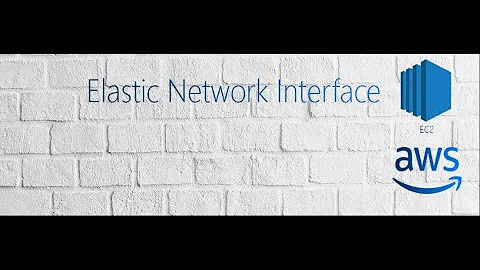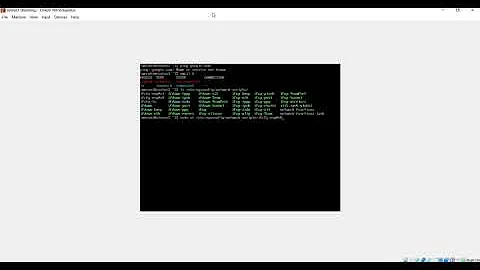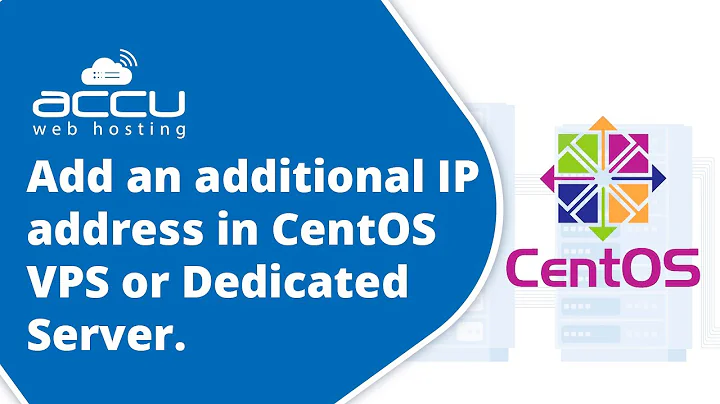Server not accessible on eth1 (additional network interface) CentOS 7 on AWS EC2
Finally, no one but this guy at: https://www.internetstaff.com/multiple-ec2-network-interfaces-on-red-hat-centos-7/ helped me.
For preserving information if the link becomes invalid in future, here is the fruitful content from the post:
-
Force your default gateway to be eth0:
Edit /etc/sysconfig/network and add:
GATEWAYDEV=eth0Not doing this left the default gateway of the main routing table set to the last interface to be configured, which caused some strange behavior.
-
Configure each additional interface you've added:
In /etc/sysconfig/network-scripts, create an ifcfg-ethX for each new interface.
Modify:
-
The DEVICE name to match the ENI.
DEVICE="eth1" BOOTPROTO="dhcp" ONBOOT="yes" TYPE="Ethernet" USERCTL="yes" PEERDNS="yes" IPV6INIT="no" PERSISTENT_DHCLIENT="1"
-
-
Add a custom route for each additional interface.
Again in /etc/sysconfig/network-scripts, create a route-ethX file for each interface.
Modify:
- The device name.
- Increment the table number.
- The gateway to your VPC subnet's gateway.
-
Change the source IP to the assigned internal network address of the ENI.
default via 10.0.0.1 dev eth0 table 1 10.0.0.0/24 dev eth0 src 10.0.0.10 table 1
-
Also in /etc/sysconfig/network-scripts, create a rule-ethX for each interface.
Modify:
- Increment the table number to match route-ethX.
-
Change the IP to the assigned internal network address of the ENI.
from 10.0.0.10/32 table 1
Restart the network service and you should be up and running. You can confirm with ip rule:
# ip rule
0: from all lookup local
32764: from 10.0.0.10 lookup 3
32765: from 10.0.0.11 lookup 2
32766: from all lookup main
32767: from all lookup default
Note that Amazon suggested a custom route and rule for eth0, but we found allowing eth0 to use the default main routing table not only worked but was more flexible.
Related videos on Youtube
VPZ
Updated on September 18, 2022Comments
-
 VPZ over 1 year
VPZ over 1 yearI have created a CentOS 7 instance on EC2, installed my required application-ware, assigned 1 Elastic IP to default network interface (eth0) and it is all accessible.
Now I created another Network Interface, assigned an Elastic IP to that and then attach the ENI afterwards to the instance. Now, the instance isn't reachable on the eth1 (new additional network interface).
I have tried various approaches found on google creating ifcfg-eth1 in /etc/sysconfig/network-scripts but with no luck.
For help, this is the output from ifconfig -a (IPs masked):
eth0: flags=4163<UP,BROADCAST,RUNNING,MULTICAST> mtu 9001 inet 1XX.3XX.2XX.4XX netmask 255.255.240.0 broadcast 1XX.3XX.2XX.4XX inet6 fe80::2e:a1ff:fe01:c763 prefixlen 64 scopeid 0x20<link> ether 02:2e:a1:01:c7:63 txqueuelen 1000 (Ethernet) RX packets 219 bytes 28188 (27.5 KiB) RX errors 0 dropped 0 overruns 0 frame 0 TX packets 284 bytes 31055 (30.3 KiB) TX errors 0 dropped 0 overruns 0 carrier 0 collisions 0 eth1: flags=4098<BROADCAST,MULTICAST> mtu 1500 ether 02:78:73:34:66:35 txqueuelen 1000 (Ethernet) RX packets 0 bytes 0 (0.0 B) RX errors 0 dropped 0 overruns 0 frame 0 TX packets 0 bytes 0 (0.0 B) TX errors 0 dropped 0 overruns 0 carrier 0 collisions 0 lo: flags=73<UP,LOOPBACK,RUNNING> mtu 65536 inet 127.0.0.1 netmask 255.0.0.0 inet6 ::1 prefixlen 128 scopeid 0x10<host> loop txqueuelen 0 (Local Loopback) RX packets 23 bytes 4968 (4.8 KiB) RX errors 0 dropped 0 overruns 0 frame 0 TX packets 23 bytes 4968 (4.8 KiB) TX errors 0 dropped 0 overruns 0 carrier 0 collisions 0And this is from ip addr:
1: lo: <LOOPBACK,UP,LOWER_UP> mtu 65536 qdisc noqueue state UNKNOWN link/loopback 00:00:00:00:00:00 brd 00:00:00:00:00:00 inet 127.0.0.1/8 scope host lo valid_lft forever preferred_lft forever inet6 ::1/128 scope host valid_lft forever preferred_lft forever 2: eth0: <BROADCAST,MULTICAST,UP,LOWER_UP> mtu 9001 qdisc pfifo_fast state UP qlen 1000 link/ether 02:2e:a1:01:c7:63 brd ff:ff:ff:ff:ff:ff inet 1XX.3XX.2XX.4XX/20 brd 1XX.3XX.2XX.4XX scope global dynamic eth0 valid_lft 3404sec preferred_lft 3404sec inet6 fe80::2e:a1ff:fe01:c763/64 scope link valid_lft forever preferred_lft forever 3: eth1: <BROADCAST,MULTICAST> mtu 1500 qdisc noop state DOWN qlen 1000 link/ether 02:78:73:34:66:35 brd ff:ff:ff:ff:ff:ffMy /etc/sysconfig/network-scripts/ifcfg-eth0 file has these contents:
DEVICE="eth0" BOOTPROTO="dhcp" ONBOOT="yes" TYPE="Ethernet" USERCTL="yes" PEERDNS="yes" IPV6INIT="no" PERSISTENT_DHCLIENT="1"-
 Admin over 7 yearsI'm not an expert in this area, but it looks to me like you don't have IP addresses assigned to eth1, and you probably need to set up routing properly. Asymmetric routing is a possible problem you may have once you get the basics going. Have you read widely on this issue, such as Amazon documentation? I found an interesting article which might be of assistance : blog.bluemalkin.net/multiple-ips-and-enis-on-ec2-in-a-vpc
Admin over 7 yearsI'm not an expert in this area, but it looks to me like you don't have IP addresses assigned to eth1, and you probably need to set up routing properly. Asymmetric routing is a possible problem you may have once you get the basics going. Have you read widely on this issue, such as Amazon documentation? I found an interesting article which might be of assistance : blog.bluemalkin.net/multiple-ips-and-enis-on-ec2-in-a-vpc
-
-
mangolier about 4 yearsThanks, @VPZ this helped me a lot. However I also had to delete NetworkManager package to make it work properly. I'm using CentOS 7





